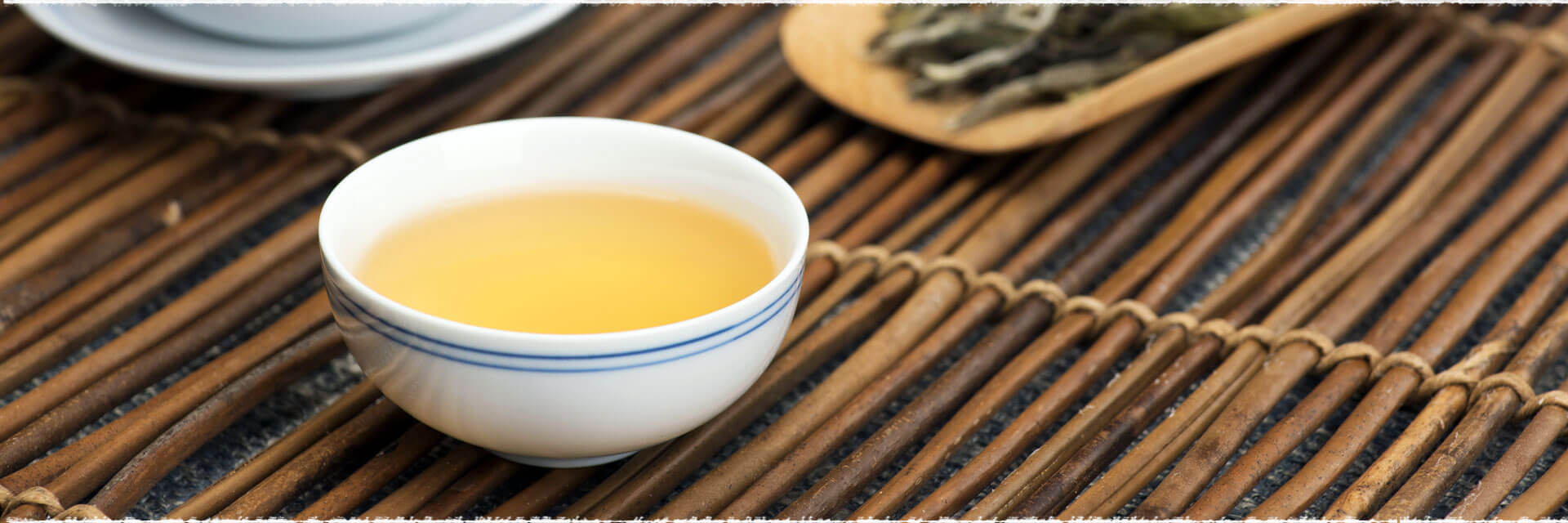One of the more popular white teas is known as White Peony Tea in English, but is also known as Bai Mu Dan (白牡丹) or Pai Mu Tan in China. Bai Mu Dan is a well known type of white tea which is produced by plucking the bud and one leaf, or two leaves and a bud of the larger leafed tea trees or Narcissus tea trees' shorter and smaller sprouts. The larger, fleshy buds of the "Big White," "Small White" and "Narcissus" tea bush varieties were selected back in 1885 to make white teas and are still used today as the raw material for the production of white tea, including White Peony teas.
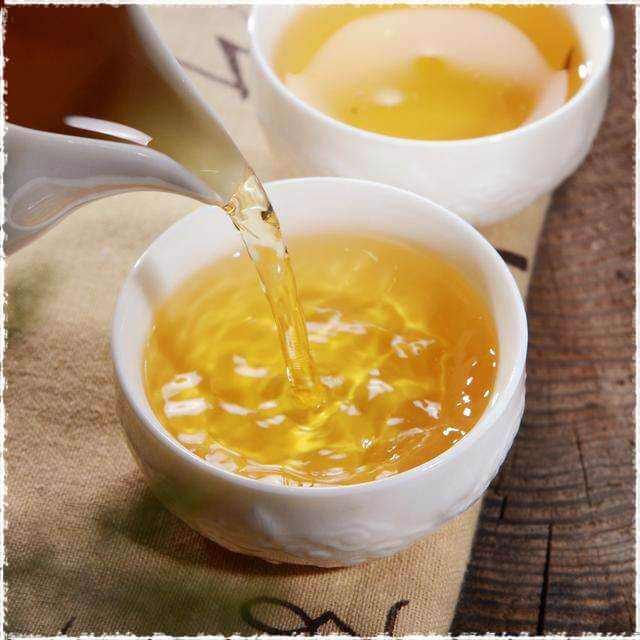

The Origin of White Peony Teas
Pai Mu Tan is mainly produced in Fujian, Fuding and in Zhenghe, China. The two tea cultivars used in producing Bai Mu Dan are called the “Dai Bai” varieties of tea. The Fuding Dai Bai cultivar is used in eastern Fujian, while in northern Fujian, the Zhenghe Dai Bai cultivar is used which create two distinctly different and unique styles of White Peony tea: the Fuding variety and the Zhenghe variety.


Properly Brewing White Peony Tea
To properly brew Bai Mu Dan, you should ideally use 2-3 teaspoons of dry Bai Mu Dan leaves for 8oz of water. Brew at 194 ºF (90 ºC) for 1 to 2 minutes. If you prefer the flavor to be stronger, you may extend the brewing time for up to 3 or 4 minutes. However it is very important that you keep the water well below boiling so that you do not scorch the delicate white tea leaves and remove the beneficial nutrients and delicious flavor of a White Peony white tea. Please read TeaVivre’s article on How to Make White Peony Bai Mu Dan Tea for detailed information on brewing White Peony tea.
The Flavor of White Peony Tea
Brewed Pai mu Tan has a clear bright apricot color, with a natural lightly floral fragrance. White Peony white tea has a flavor which is very refreshing. It has layers of mellow and earthy flavors with highlights of a lightly sweet delicate and smooth floral tone. Although there are no actual peonies in White Peony white tea, it does have a slightly floral finish and aroma that lends an interesting note to its more earthy flavors.

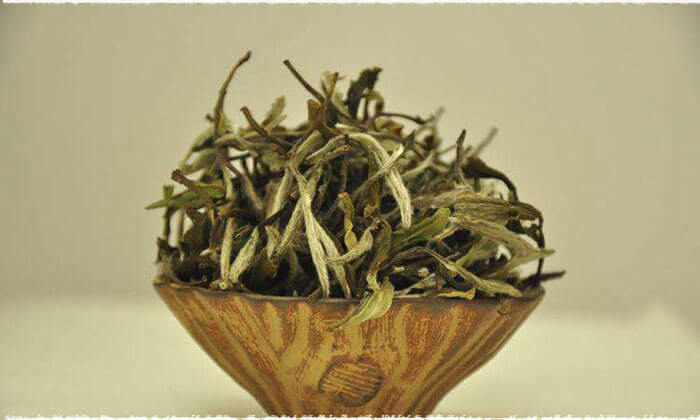
How to Store White Peony Tea
The best way to store your Bai Mu Dan white tea is in a low temperature, shady and dry area where there are no strong odors or other possible pollutants that could alter or degrade the tea. In China, Pai mu Tan is a lot like Pu-erh teas, where aged white teas are better than newly processed white teas, and 3 year old White Peony tea is more expensive than Bai Mu Dan newly processed this year. Aged Bai Mu Dan has a slightly different taste, with a more mellow and deep flavor to it. However you should be sure to store your Pai Mu Tan properly if you want it to age well and not degrade. For more information on properly storing your Pai Mu Tan, please read TeaVivre exclusive article on The Proper Storage of Tea.
The Beneficial Health Effects of White Peony Tea
The highest grades of Bai Mu Dan usually have over 30% more polyphenols than most other teas, although Silver Needle white tea has even more polyphenols than Bai Mu Dan. The main composition of tea polyphenols are catechins and flavone, making White Peony tea rich in anti-oxidants, and has been reported to help prevent hardening of the arteries and remove toxins from the body. Here are some interesting scientific information articles on White Peony white tea and its health benefits:
https://www.sciencedirect.com/science/article/pii/S0006291X02009142
https://www.sciencedirect.com/science/article/pii/S1383571801002005
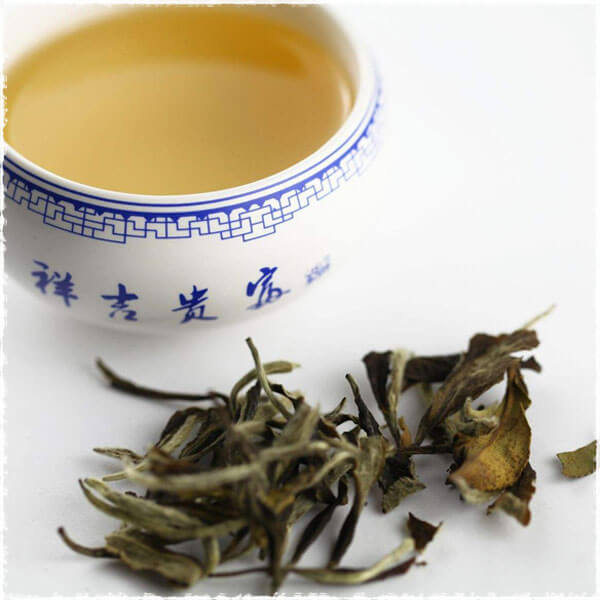

How White Peony Tea is Produced
White Peony tea is usually picked early in the springtime, with one two-leafed bud being picked which is called “SanBai” which means the bud and the two leaves are covered with white hair. Pai Mu Tan is not produced by being fried, but instead by the process of withering, including withering 'out of the house' and withering 'in the house', and two drying processes. The effort it takes to create Bai Mu Dan is difficult and only the most experienced tea farmers and tea companies can produce the highest grades of White Peony white tea. In order to recognize a high quality Pai Mu Tan, please read our article on Choosing A Top Quality White Peony Tea.

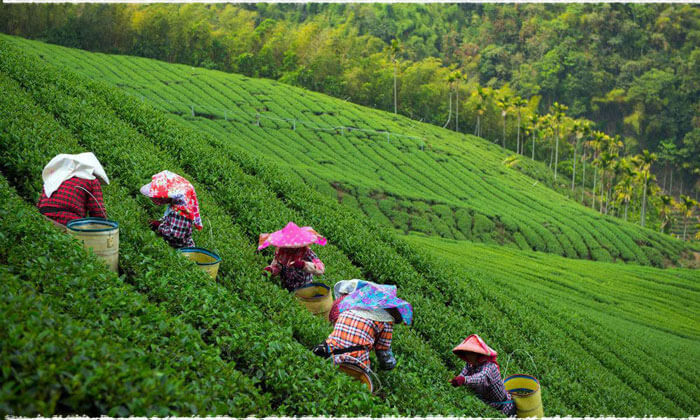
The History of White Peony Tea
Bai Mu Dan has a rich and interesting history in China. White Peony tea was originally produced by local tea farmers in the town of Shuiji in Fujian in the 1870s from the local large leafed tea trees. The popularity of Pai Mu Tan increased in the 1920s when production started in the nearby Zhenghe county, which soon became the main production area in China. Nowadays, White Peony white tea is primarily produced and manufactured in the counties of Zhenghe, Jianyang, Songxi and Fuding, all in the province of Fujian, China. To learn more about the long and fascinating history of White Peony Tea and other white teas, please read our article on White Tea History.
 Exploring the Charms of 2024 Spring Tea Garden with Angel
Exploring the Charms of 2024 Spring Tea Garden with Angel Yingde Black Tea
Yingde Black Tea Matcha vs. Green Tea Powder
Matcha vs. Green Tea Powder
